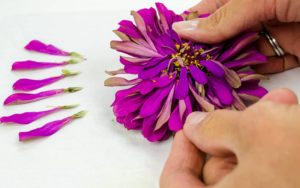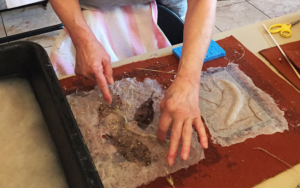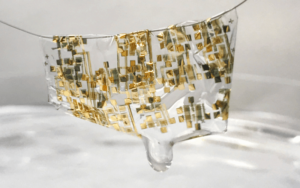
Stained glass art has been admired for centuries for its intricate designs and striking beauty. While many may assume that creating stained glass artwork is a complex and unattainable craft, it can be surprisingly simple and rewarding with the right tools, materials, and guidance. Designing your own stained glass artwork can be a satisfying way to express your creativity and add a personal touch to your home décor.
What Is Stained Glass Art?
Stained glass art is a decorative form of art that involves creating intricate designs using colored glass. The art form dates back to ancient times, with the earliest known examples found in Egyptian and Roman ruins. However, it was during the Middle Ages that stained glass art reached its pinnacle of popularity, particularly in Europe.
Stained glass art is created by cutting pieces of colored glass into shapes, which are then arranged to form a design. The pieces of glass are held together with lead strips called “cames” or copper foil. The spaces between the glass pieces are then filled with a material called solder, which is heated until it melts and hardens, sealing the glass pieces together. This process is known as “soldering.”
One of the most distinctive features of stained glass art is its use of light. When sunlight passes through the colored glass, it creates a beautiful and dramatic effect, casting colorful shadows and patterns onto the surrounding surfaces. Stained glass art can be found in various settings, including religious buildings, museums, public buildings, and private homes.
Stained glass art can take many forms, including windows, lamps, suncatchers, and decorative panels. In addition to colored glass, artists may also incorporate other materials into their designs, such as metal, wood, or stones. The designs can range from simple geometric patterns to elaborate scenes depicting religious or mythological themes.
Creating stained glass art requires skill and precision, as the glass pieces must be cut and fitted precisely to create a cohesive design. However, it can also be a rewarding and meditative process, with the artist carefully selecting and arranging each piece of glass to create a beautiful work of art.
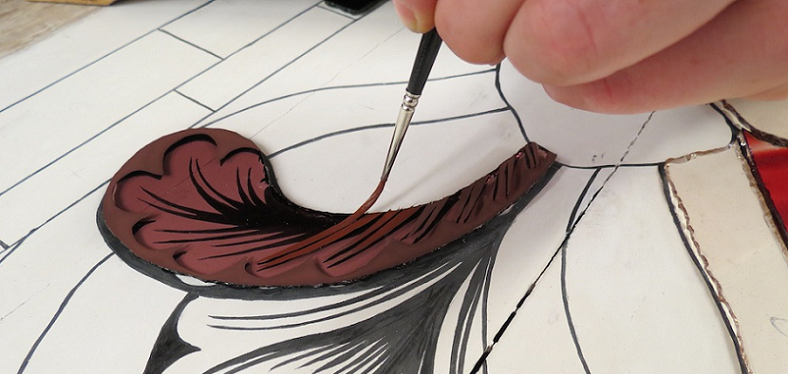
Gathering Stained Glass Art Inspiration
Gathering inspiration is a crucial part of designing stained glass artwork. Inspiration can come from a variety of sources, such as nature, art, architecture, and personal experiences. One of the best ways to gather inspiration from nature is to go for a walk and observe the colors and textures found in flowers, leaves, and landscapes. These observations can be translated into beautiful stained glass designs.
Art history is also a rich source of inspiration for stained glass artists. Researching the work of other artists can provide ideas and techniques that can be applied to your own projects. Examples of stained glass art can be found in historic buildings, museums, and churches.
Architecture is another source of inspiration for stained glass art. Many historic buildings feature intricate stained glass windows and designs, which can provide ideas for your own projects. Visiting museums or historic sites can be a great way to see examples of stained glass art in architecture.
Personal experiences can also provide inspiration for stained glass artwork. Family heritage, travel, and memories can all be incorporated into your designs. Using personal symbols or images can make your designs more meaningful.
Once you have gathered inspiration, it is important to sketch out your design ideas. This can help you visualize how the colors and shapes will work together and allow you to make adjustments before you begin cutting the glass. It is helpful to experiment with different colors and shapes to see what works best.
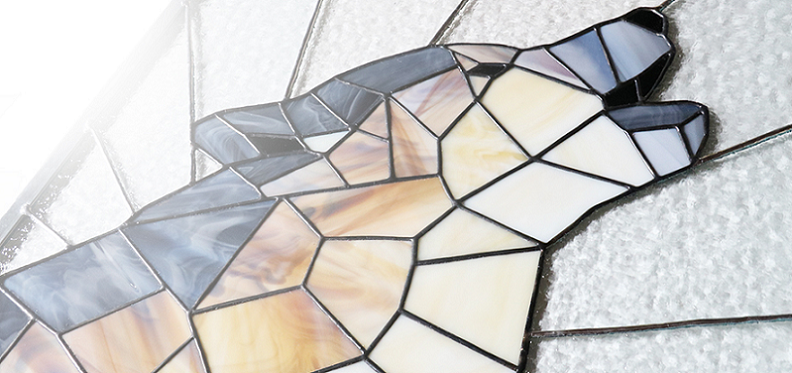
Choosing Stained Glass Art Materials
Choosing the right materials is a critical step in creating stained glass artwork. The materials used can affect the outcome of the design, the durability of the finished piece, and the safety of the artist.
Types of Glass
The first thing to consider when choosing glass for stained glass art is the type of glass. There are many different types of glass available, each with its own unique properties. Clear glass is often used for outlining designs and creating contrast. Colored glass is available in a range of hues and can be used to create a variety of effects. Opalescent glass has a milky appearance and can add texture and depth to a design.
Tools and Equipment
To create stained glass artwork, you will need a range of tools and equipment. Some of the basic tools you will need include glass cutters, pliers, and soldering irons. Additional tools, such as glass grinders and lead shears, may be needed for more advanced projects. It is important to choose high-quality tools and equipment that will last and perform well.
Safety Precautions
Working with stained glass can be dangerous if proper safety precautions are not taken. It is important to wear safety glasses and gloves when working with glass and to work in a well-ventilated area. Lead solder is often used to join glass pieces, and it is important to handle it with care and to avoid inhaling the fumes.
Lead vs. Copper Foil
When it comes to joining glass pieces together, there are two main methods: lead came and copper foil. Lead came is a strip of lead that is bent to the shape of the glass pieces and then soldered together. Copper foil, on the other hand, is a thin strip of copper that is wrapped around the edges of the glass pieces and then soldered together. Each method has its own advantages and disadvantages, and the choice may depend on the project and personal preference.
Specialty Effects
In addition to basic stained glass materials, there are also specialty effects that can be added to designs. Bevels, for example, are pieces of glass that are cut at an angle and can add dimension to a design. Etching is another technique that can be used to add texture and depth to glass pieces.

Creating the Stained Glass Art Design
Creating the design is a critical step in the stained glass art process. The design serves as a blueprint for the final product and determines the size, shape, and color of the glass pieces used.
Sketching the Design
The first step in creating a stained glass art design is to sketch out the idea on paper. This allows the artist to experiment with different shapes and color combinations. The sketch should include an outline of the design and indicate which areas will be filled with colored glass.
Transferring the Design to Glass
Once the design is sketched out on paper, it can be transferred to the glass. There are a few different ways to do this, including tracing the design onto the glass with a permanent marker or using a template to cut out the pieces. It is important to handle the glass carefully to avoid breaking or cracking it.
Cutting the Glass
After the design has been transferred to the glass, the pieces can be cut to size. Glass cutters are used to score the glass along the outline of the design, and then the glass is snapped along the score line. It is important to cut the glass pieces precisely to ensure that they fit together properly.
Fitting the Pieces Together
Once the glass pieces have been cut to size, they can be fitted together using either lead came or copper foil. With lead came, the pieces of glass are held together with strips of lead that are soldered at the joints. With copper foil, a thin strip of copper foil is wrapped around the edges of the glass pieces, and then the pieces are soldered together.
Soldering the Joints
After the pieces of glass have been fitted together, the joints are soldered together. A soldering iron is used to melt the solder and join the pieces of glass together. It is important to be careful not to overheat the glass or the solder.
Cleaning and Polishing
Once the stained glass art has been soldered together, it needs to be cleaned and polished. This involves removing any excess solder and cleaning the glass pieces to remove any residue. The finished piece can then be polished with a soft cloth.
Finishing the Stained Glass Artwork
Finishing the stained glass artwork involves a series of steps to ensure that the final product is polished, secure, and ready for display.
Soldering the Joints
Once the glass pieces have been cut and fitted together, the joints are soldered together. This involves using a soldering iron to melt the solder and join the pieces of glass. It is important to make sure that the solder is evenly applied and that the joints are secure.
Cleaning the Glass
After the stained glass artwork has been soldered together, it needs to be cleaned to remove any residue or excess solder. This involves using a special cleaning solution and a soft cloth to gently wipe down the glass pieces.
Applying Patina
After the glass has been cleaned, a patina can be applied to give the solder a more polished appearance. This involves applying a chemical solution to the solder and rubbing it in with a soft cloth. The patina can be applied in a variety of colors, depending on the desired look of the final product.
Framing the Artwork
Once the patina has been applied, the stained glass artwork can be framed. This involves choosing a frame that complements the artwork and securing the artwork to the frame. It is important to make sure that the artwork is centered and that the frame is secure.
Adding Hanging Hardware
Hanging hardware can be added to the frame to make the artwork ready for display. This can include a wire or a hook that is secured to the back of the frame. It is important to make sure that the hanging hardware is secure and that it can support the weight of the artwork.
Stained Glass Art Tips and Tricks
Stained glass art is a beautiful and intricate craft that requires patience, skill, and attention to detail. Here are some tips and tricks to help you create successful stained glass artwork:
- Practice with Basic Shapes: If you are new to stained glass art, it can be helpful to practice with basic shapes before moving on to more complex designs. This can help you get comfortable with cutting and fitting glass pieces together.
- Use a Glass Grinder: A glass grinder can be a helpful tool for smoothing out rough edges and adjusting the size of glass pieces. This can be especially helpful for achieving a precise fit when working on more complex designs.
- Keep the Glass Clean: It is important to keep the glass pieces clean throughout the process to avoid smudging or scratching. Use a soft cloth and glass cleaner to wipe down the glass pieces regularly.
- Work in a Well-Lit Area: Working in a well-lit area can help you see the details of your work and avoid mistakes. It can also help you appreciate the colors and textures of the glass as you work.
- Be Patient: Stained glass art is a time-consuming process that requires patience and attention to detail. Take your time with each step and don’t rush the process.
- Experiment with Color: One of the most enjoyable aspects of stained glass art is the use of color. Don’t be afraid to experiment with different color combinations to see what works best for your design.
- Incorporate Bevels and Etching: Bevels and etching can add texture and depth to stained glass designs. Incorporating these techniques can add an extra layer of interest to your artwork.
- Troubleshoot Mistakes: Mistakes are inevitable in stained glass art, but they can often be fixed. Keep some extra glass pieces on hand in case you need to replace a broken piece, and use a soldering iron to make minor adjustments to the final product.


